Good Morning! Once again, Tim Cook opened the event at Apple Park with his classic greeting. But unlike in previous years, this time he introduced the event with mentions of “Apple Intelligence” and “Machine Learning” right at the start, indicating the heightened focus Apple is placing on AI this year.
The all-new iPhone 16 series is also Apple’s first truly AI-powered iPhone.
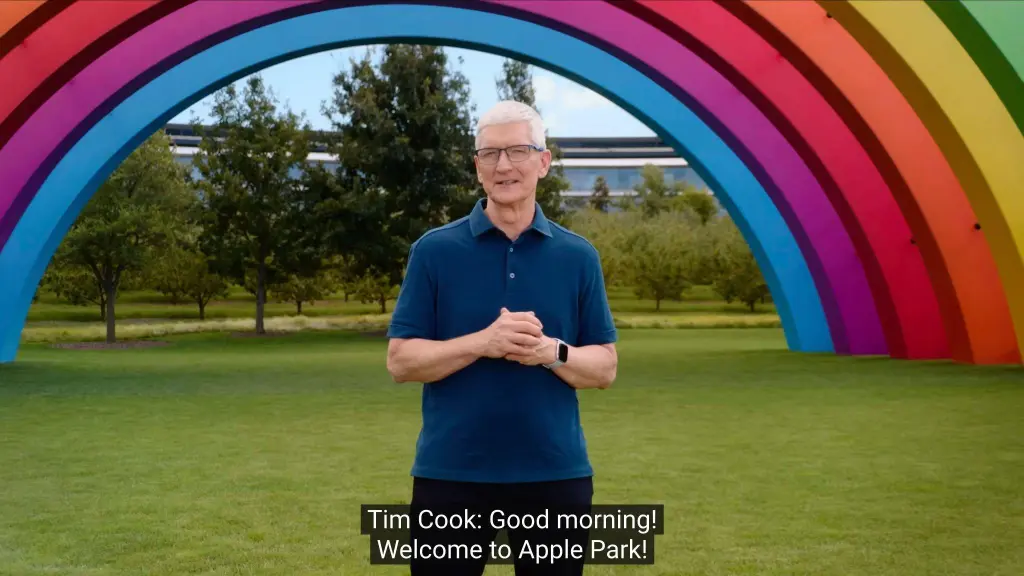
To address some of the most pressing questions people have about the iPhone 16, we’ve prepared a quick Q&A. This handy guide will give you the most concise and direct answers, whether you’re curious about the new features or on the fence about upgrading.
Q: Why does the iPhone 16 Pro look like the 15? A: Larger screen, new "Camera Control," slimmer bezels. Q: Biggest design change on iPhone 16? A: Vertical camera layout, like the iPhone X. Q: New colors? A: iPhone 16: white, teal, ultramarine. Pro: "Desert Titanium." Q: What is "Camera Control"? A: Controls zoom, depth, shooting styles on all models. Q: Does it support Apple Intelligence? A: Yes, but some AI features come later. Q: Price compared to last gen? A: Same price. Q: Pre-order and release date? A: Pre-order: 5:00 a.m. PDT on 9.13, Release: Sept 20.

We’ve already tried out the iPhone 16 and a range of other new products firsthand. More details that weren’t mentioned during the event will be shared in our follow-up articles later. Now, let’s explore the all-new Apple products.
Table of Contents
– For the First Time Ever: The First iPhone Built for AI
– iPhone 16 Pro: New imaging features, pro max with the largest screen ever
– iPhone16: upgrade without a price increase, the best iPhone in recent years
– Apple Watch: Bigger Screen, Stunning New Design
– AirPods 4: Now with Noise Cancellation
– What Will Drive the New iPhone Cycle?
For the First Time Ever: The First iPhone Built for AI
“The next generation of iPhone has been designed for Apple Intelligence from the ground up,” Tim Cook said. This statement will undoubtedly go down in the history of Apple’s keynote speeches.
The biggest highlight of the iPhone 16 series is the upcoming release of Apple Intelligence, although it wasn’t rolled out immediately. In the short term, it will only be available in the U.S. for English speakers.
Apple also announced that Apple Intelligence will gradually support more languages. In December, English dialects in Australia, Canada, New Zealand, South Africa, and the United Kingdom will be the first to benefit. By 2025, Apple plans to add support for other languages, including Chinese, French, Japanese, and Spanish.

Some users have already experienced a few of the simpler, system-level features of Apple Intelligence last month, such as content proofreading, text summarization, and email responses. However, many of the highly anticipated AI features are yet to be released.
In other words, the release dates for the much-discussed ChatGPT integration, the Image Playground image generation feature, and Genmoji emoji creation tool remain a mystery.
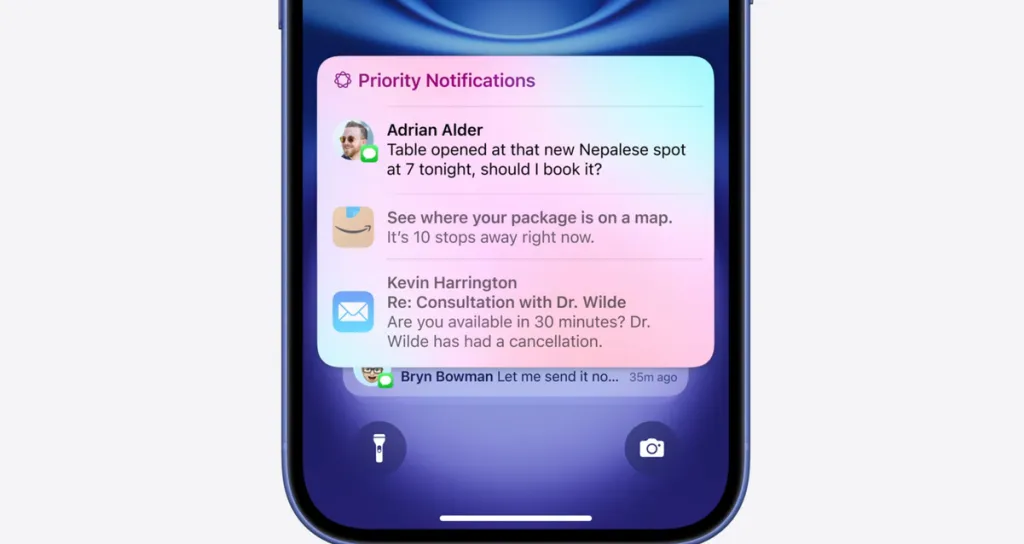
Apple is less than halfway through the timeline for delivering on the AI promises made at WWDC, but they’ve already announced more AI features and updates at this event. The most significant of these is the ability to enable Visual Intelligence through “Camera Control.” For example, when you see a restaurant, you can press “Camera Control” to snap a picture, and Apple Intelligence will instantly provide its business hours and ratings, allowing you to view the menu or make a reservation.
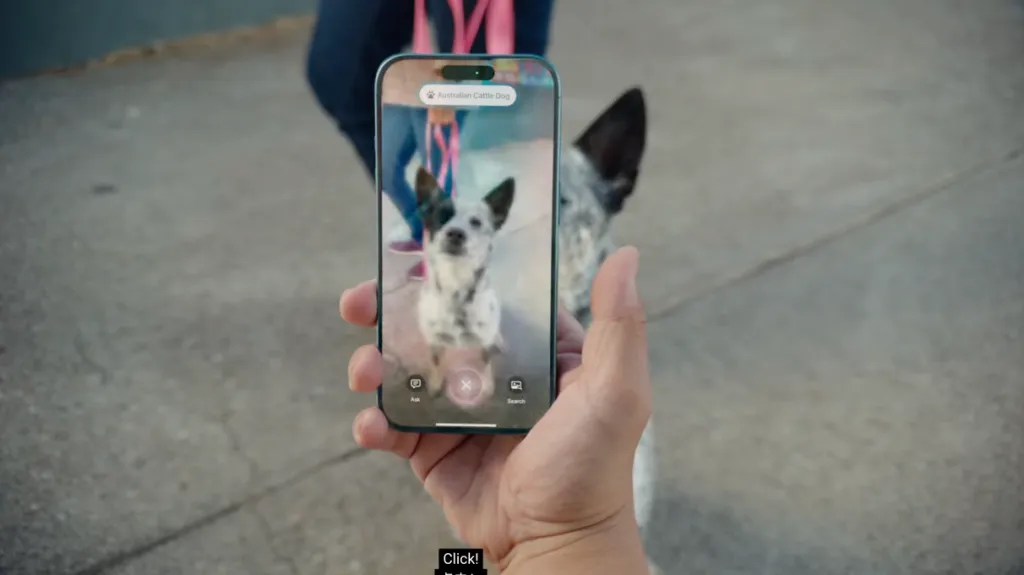
See an interesting flyer? Use a similar action to add the event to your calendar, along with the location, and get detailed information about it. Or, if you spot a cute dog, a quick snap will identify its breed.
This feature can also integrate with third-party apps. For instance, if you find a bike you like, just click to search Google, and you’ll be able to quickly purchase a similar one.
iPhone 16 Pro: New imaging features, pro max with the largest screen ever
Let’s start with the standout Pro series. While the design hasn’t changed much, the iPhone 16 Pro continues to maintain the high standard of the Pro lineup when it comes to imaging and performance. Here are the highlights:
- All-new “Camera Control” equipped, Pro models feature quad-prism telephoto lens
- 4K 120 fps Dolby Vision video recording + 4 studio-grade microphones
- The world’s thinnest phone bezels, with an even larger screen
- A18 Pro chip with incredible performance
- New “Desert Titanium” color
- Price remains the same, with the Pro model starting at $999 USD and the Pro Max model starting at $1,199 USD.
1. More Professional Imaging, Enhanced with “Add-ons”
Each year, Apple delivers significant upgrades to the imaging capabilities of the Pro models, and this year is no exception. All three cameras have been upgraded, delivering not only better photos but also industry-leading video shooting capabilities—an area where Apple excels.

Let’s take a closer look at the upgrades to the three rear cameras. The primary camera is a 48MP fusion camera with a second-generation quad-pixel sensor, supporting 48MP ProRaw and HEIF photo capture, and offering zero shutter lag.
One of the biggest improvements is to the ultra-wide-angle lens, which has been upgraded from 12 MP to 48 MP. It now features a quad-pixel sensor with autofocus, and its aperture has been improved from f/4.4 to f/2.2, allowing it to capture more light in low-light environments—closely tied to the event’s theme, “It’s Glowtime.”

For the telephoto lens, the iPhone 16 Pro is now on par with the Pro Max version, using the same quad-prism telephoto lens, supporting 5x optical zoom with a 12-megapixel resolution and f/2.8 aperture.
Simply having great hardware specs isn’t enough to create stunning photos. The first new imaging feature on the iPhone 16 is the “Photographic Styles” functionality. Apple has introduced a series of new styles specifically for the iPhone 16 Pro series.
These aren’t just filters slapped on after the fact; instead, machine learning applies real-time color grading to the subject while you’re shooting. Thanks to the powerful chip, these style effects can be previewed live in the camera and allow users to fine-tune their effect.
Apple’s strength in video recording, which has won over many professionals, has also been further enhanced in the iPhone 16 Pro.
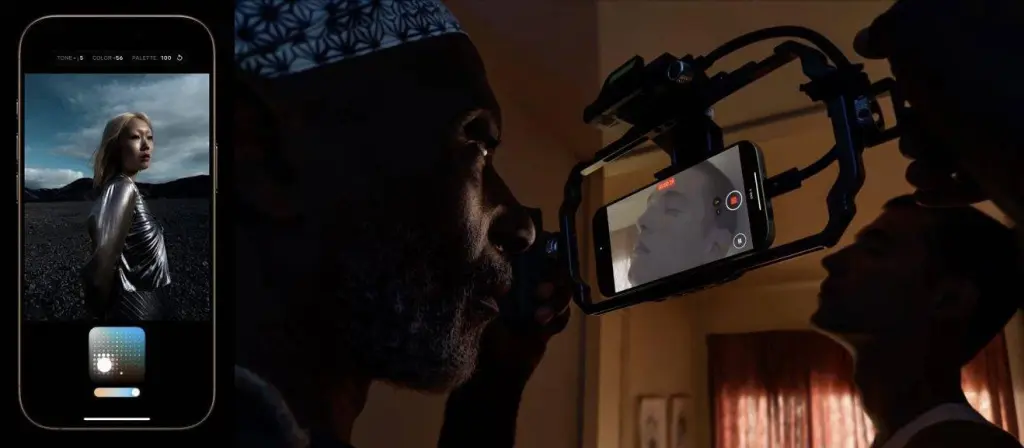
The more powerful lenses and processor enable support for 4K 120 fps Dolby Vision video. The resulting footage is clearer, with more detailed motion capture, and the 120 fps frame rate minimizes blur or stuttering during fast-moving scenes. This also allows users to create slow-motion videos with greater visual impact.
The Photos app also supports editing 4K 120 fps Dolby Vision videos, allowing frame-by-frame color grading at a “cinema-grade quality.” You can even slow down standard-speed video to play at 24 fps, offering extensive possibilities for post-production editing.
Accompanying these upgrades to video recording, the iPhone 16 Pro’s audio recording capabilities have also been improved. The device is equipped with four studio-grade microphones, offering three different mixing modes:
- In-frame sound: Only captures the sound of people within the camera frame during shooting, even if others outside the frame are talking.
- Studio mode: Makes voices in the video sound like they were recorded in a professional studio with soundproofing.
- Cinematic effect: Captures all voices in the surrounding environment and blends them into a surround sound experience, much like how audio is mixed in a movie.
With the camera fully loaded with new features, Apple has also designed a brand-new physical interaction button called “Camera Control,” which is a standout new feature in the iPhone 16 series.
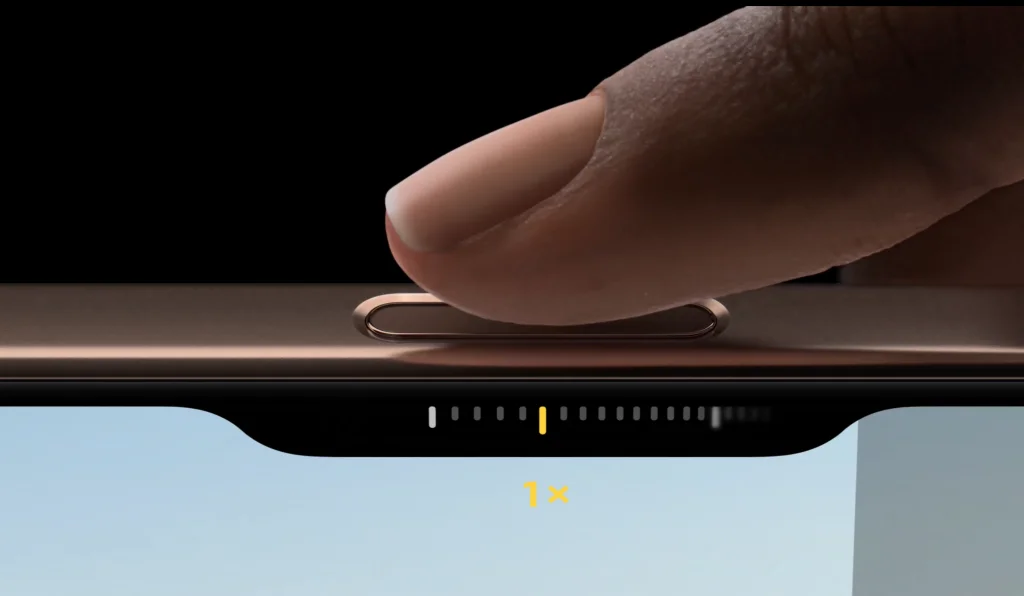
Located just below the lock button on the iPhone, it functions similarly to a physical shutter button. With this “Camera Control” button, you can easily perform the following actions:
- Press to open the camera app
- Single click to take a photo
- Long press to start recording a video
- Lightly press and slide to zoom in or out
- Double-tap to switch between other camera settings like exposure, depth of field, camera modes, styles, and tones.
In addition to working within Apple’s native camera app, “Camera Control” is also supported by third-party apps.
2. Stronger Performance, Lower Power Consumption: The A18 Pro
This year brings a big change in processors, with both the standard and Pro models now equipped with Apple’s latest A18 chip.
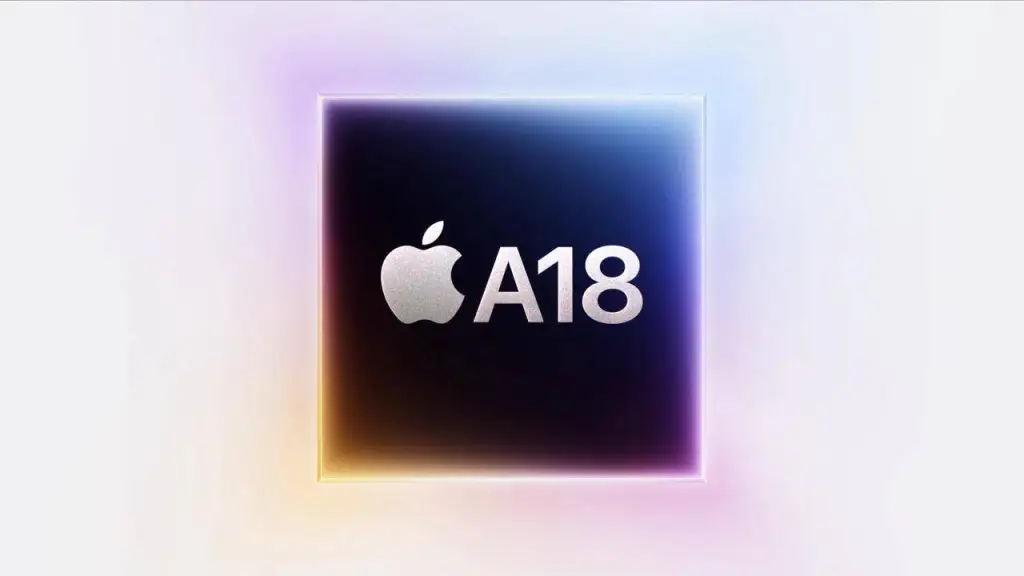
But no one understands strategy better than Apple. The fully powered A18 Pro, with its enhanced GPU and CPU, is a representation of Apple’s top-tier performance.
The A18 Pro maintains a configuration of 6 CPU cores and 6 GPU cores. The 6-core GPU delivers 20% better performance than the A17 Pro, with hardware-accelerated ray tracing capabilities that are up to twice as fast as the previous generation. Well, the A17 Pro’s ray tracing performance was already powerful enough to run console-level games…
The 6-core CPU is 15% faster than the A17 Pro, while also reducing power consumption by 20%. Apple has directly stated: “The fastest CPU in any smartphone.”
Born for AI, the A18 Pro also features a 16-core Neural Engine, offering 15% more power for running Apple Intelligence than its predecessor.
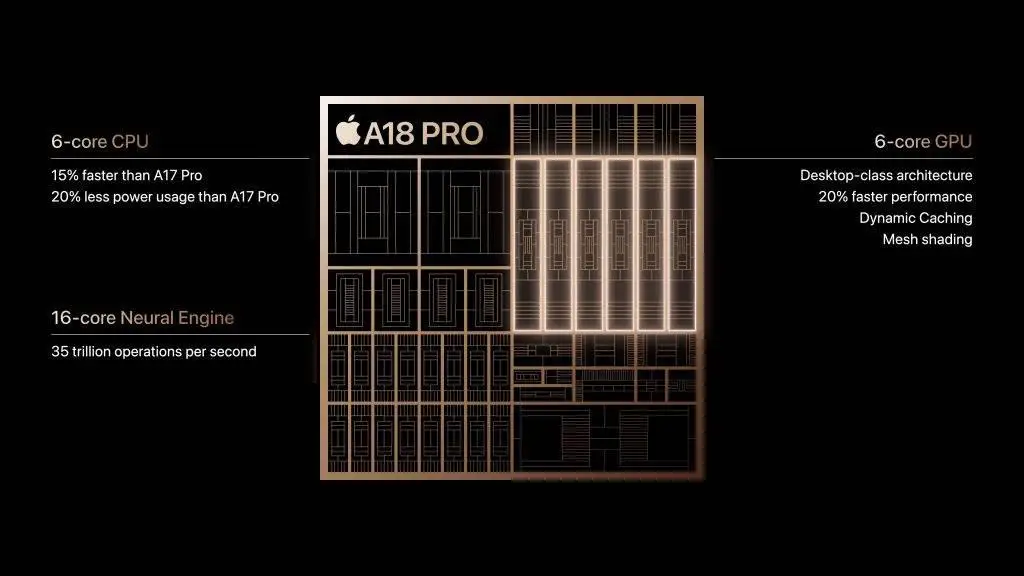
Previous iPhone models often couldn’t fully utilize the powerful chip performance due to thermal limitations. However, this year’s iPhone 16 Pro series adopts a metal cooling structure and an optimized glass backplate. According to Apple, this results in a sustained performance improvement of up to 20% compared to the iPhone 15 Pro.
3. Larger Size, Longer Battery Life
There are also some additional details worth noting. Both Pro models feature larger screens this year: the iPhone 16 Pro has grown from 6.1 inches to 6.3 inches, and the iPhone 16 Pro Max has expanded from 6.7 inches to 6.9 inches, making it the largest screen in iPhone history.
With the further narrowed bezels, the iPhone 16 Pro’s display is even more stunning.
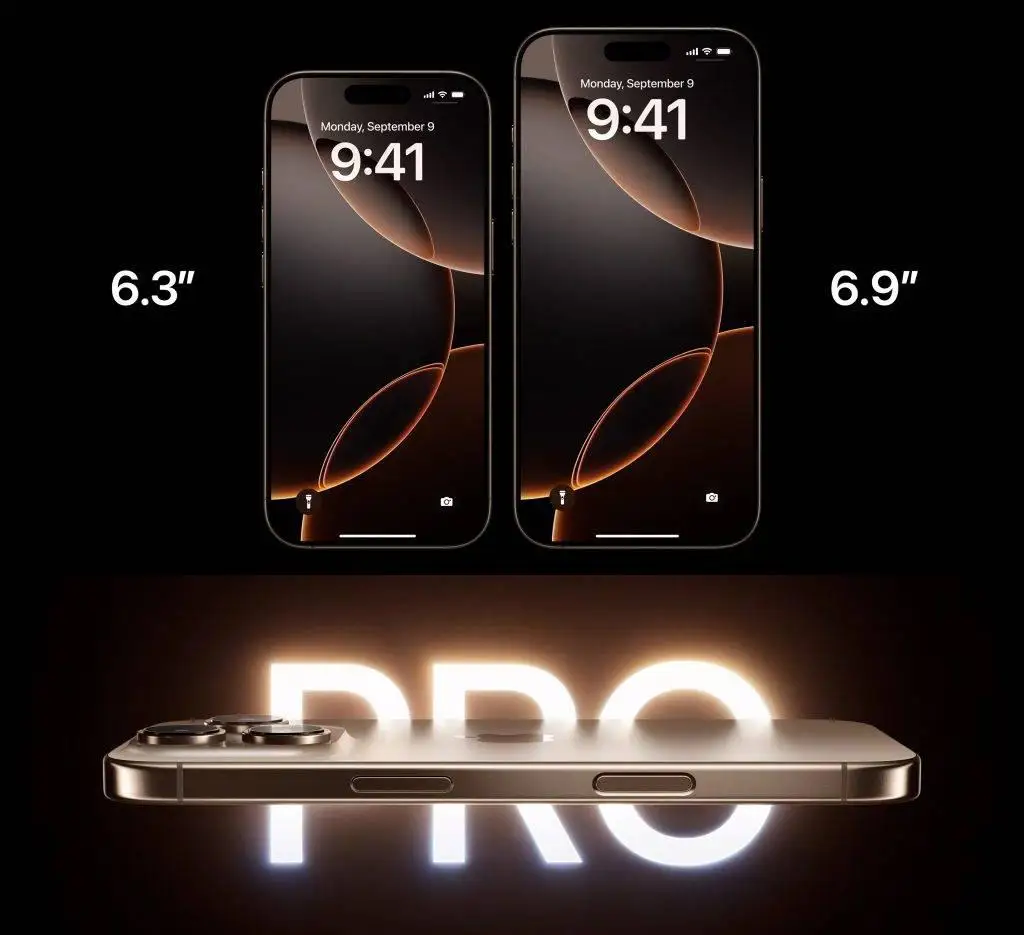
The long-rumored new color for the Pro series, “Desert Titanium,” has finally been unveiled. It’s slightly darker than the previous “Champagne Gold,” resembling a brown or deep khaki shade. It’s considered Apple’s most understated yet luxurious color in the gold family, and it’s the flagship color for the iPhone 16 Pro this year.
Thanks to optimized internal space, the iPhone 16 Pro is equipped with a larger battery. Combined with the efficiency improvements of the A18 Pro chip, the iPhone 16 Pro Max can achieve up to 33 hours of video playback, while the iPhone 16 Pro reaches up to 27 hours.
iPhone16: upgrade without a price increase, the best iPhone in recent years
Before we dive into the iPhone 16, let’s take a look at its key features:
- First-time support for spatial video recording and Apple Intelligence
- First to include Camera Control, with support for macro photography
- Processor upgraded from the A16 to the A18, featuring second-generation 3nm process technology
- Rear cameras return to the vertical arrangement with a dual-lens design
- Starting price for iPhone 16 and iPhone 16 Plus is $799 USD and $899 USD, respectively.
In past years, the standard iPhone often played the role of the “little sibling” to the Pro models. But this year, the iPhone 16, with its strong value for money, is set to take the spotlight. It may very well mark the beginning of a new era for Apple’s ecosystem, carrying greater strategic importance.
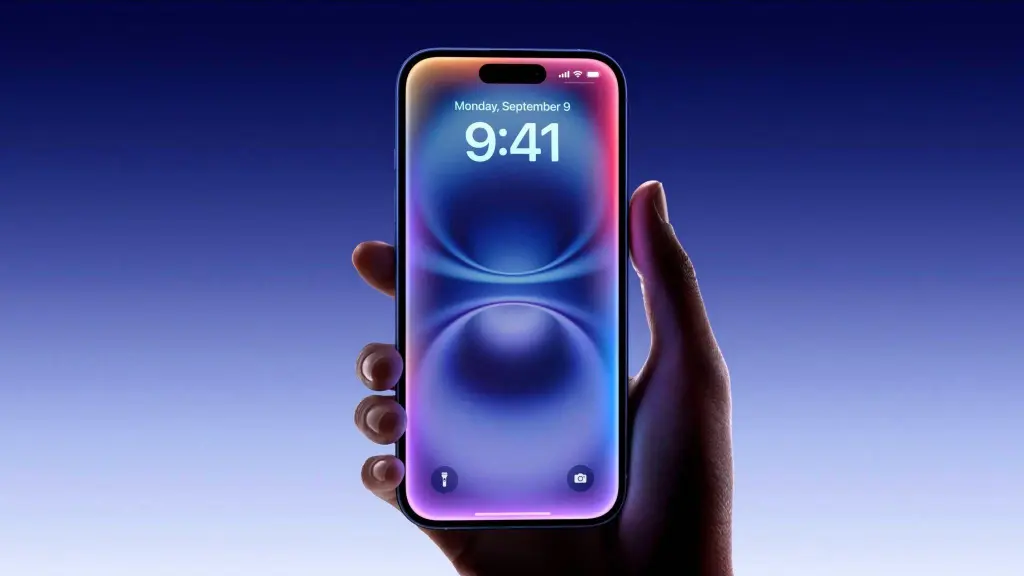
This shift is first reflected in its support for Apple’s in-house AI capabilities. The iPhone 16 addresses the shortcomings of the iPhone 15 by fully integrating into the fast lane of Apple Intelligence. To achieve this “smart” transformation, the iPhone 16’s processor has received a significant upgrade, moving from the A16 chip in the iPhone 15 to the all-new A18 chip this year.
Compared to last year’s use of the N3B process in the A17 Pro, this year’s second-generation 3nm process offers even greater energy efficiency. The neural engine’s speed has doubled, the memory subsystem has been upgraded, and bandwidth has increased by 17%.
Additionally, the A18 features a 6-core CPU, including 2 performance cores and 4 efficiency cores, delivering 30% faster performance than the CPU in the iPhone 15. Under the same performance conditions, power consumption can be reduced by up to 30%, making it competitive with high-end desktop PCs.

Thanks to the A18, the iPhone 16 now supports ray tracing, allowing it to run AAA games that were previously exclusive to the iPhone 15 Pro smoothly. Interestingly, the RPG game Honor of Kings World also made a cameo at the event, serving as a fun little surprise.
When it comes to the user experience, many factors contribute, but the fundamental components like processor and memory upgrades remain key in determining a phone’s “shelf life.”

This year, the iPhone 16 comes with a 6.1-inch display, while the iPhone 16 Plus features a 6.7-inch display. After three generations of square and diagonal camera module designs, this year’s iPhone 16 returns to a vertical dual-lens arrangement. Whether this design is aesthetically pleasing may vary from person to person, but at least it enhances recognizability when compared to previous models.
Some may joke, “vertical becomes diagonal, diagonal becomes vertical, another year of innovation,” but the return to a vertical camera layout is actually tied to Apple’s forward-thinking strategy—introducing spatial video recording capabilities, which were exclusive to last year’s Pro models.
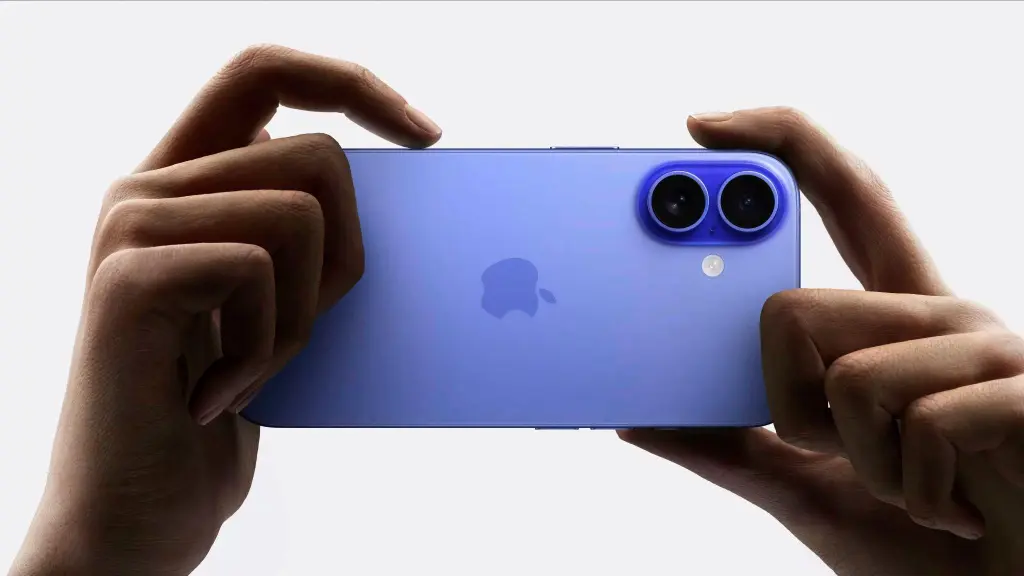
With a design similar to the iPhone 15 Pro’s ultra-wide and primary cameras arranged vertically, the iPhone 16 now also supports spatial video recording, lowering the barrier to entry for this “magical recording” technology.
In line with the Pro models, the standard iPhone now boasts significant improvements in its ultra-wide camera. The aperture has been upgraded from f/2.4 to f/2.2, allowing the sensor to capture more light and thus improving low-light performance, which complements the “It’s Glowtime” event theme.
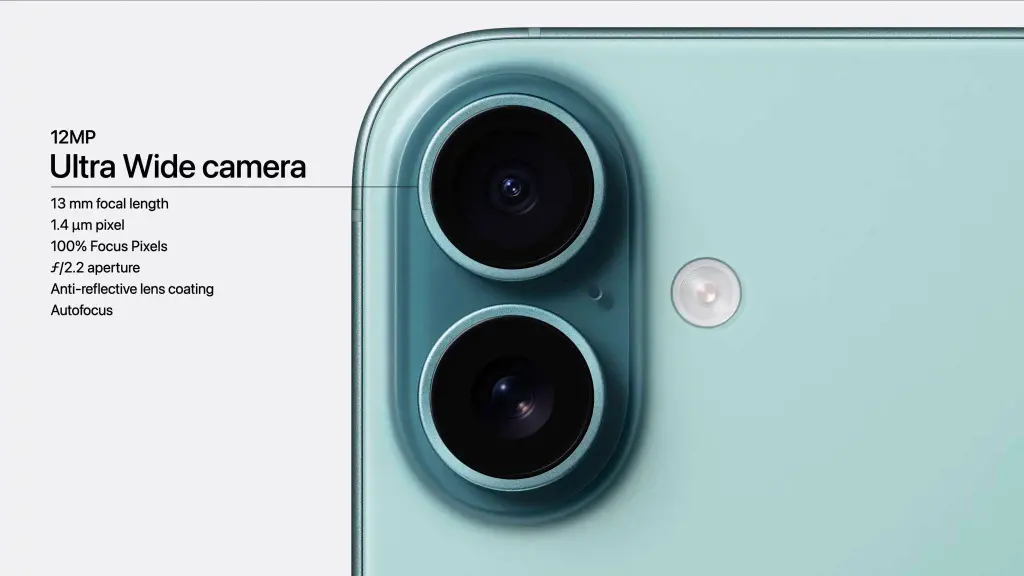
Additionally, no need to envy the Pro models’ macro photography capability anymore, as the iPhone 16 now includes this feature too. This allows you to capture close-up shots of objects like flowers, insects, and textures, giving photography enthusiasts more creative options.
The front camera remains unchanged, continuing with a 12MP resolution.
In terms of colors, the iPhone 16 is available in five options: black, white, pink, teal, and ultramarine. It features a refined microblasted finish on its colored glass back, which helps resist fingerprints and dirt while maintaining a sleek appearance.
Compared to the lighter, more pastel hues of the previous generation, this year’s blue and green are more saturated and bold. Meanwhile, the returning white version is expected to be one of the most popular choices.
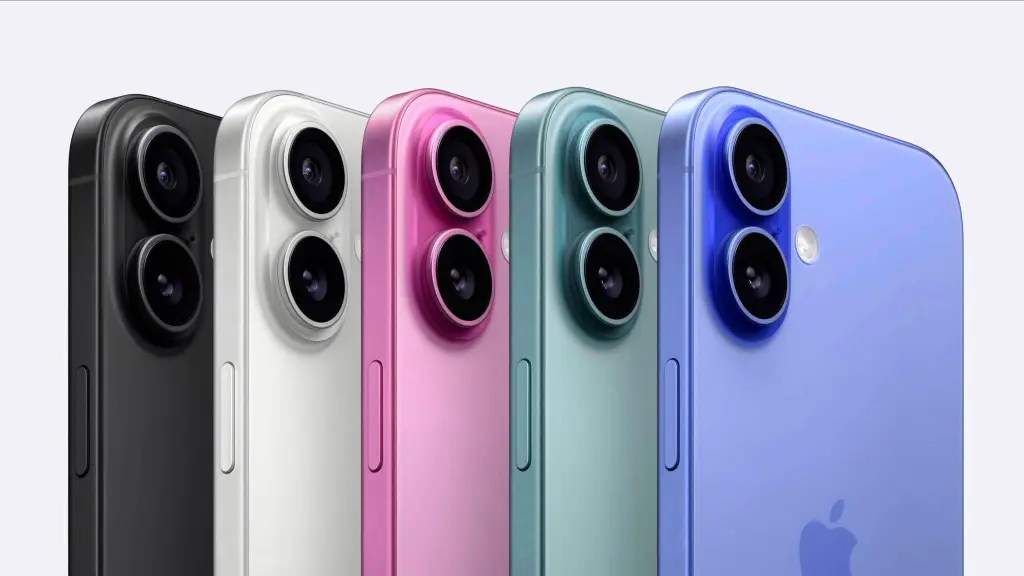
Now, for the moment everyone has been waiting for: the price. The iPhone 16 has been upgraded without a price increase. The iPhone 16 starts at $799 USD, and the iPhone 16 Plus starts at $899 USD. Pre-orders begin on September 13th at 5:00 a.m. PDT, with the official release on September 20th.
Apple Watch: Bigger Screen, Stunning New Design
The Apple Watch Series 10 introduces a brand-new design with a slimmer body (9.7mm) and a larger screen, marking the largest display in Apple Watch history. How big, you ask? It’s even larger than the Apple Watch Ultra.
In addition to the larger size, which allows users to see more content, the screen is also the first wide-angle OLED display on an Apple Watch, increasing the brightness by up to 40% when viewed from tilted angles.
The new color option, “Jet Black” with a sleek, glossy black look is sure to catch the eye of anyone who loves Jet Black iPhone 7.
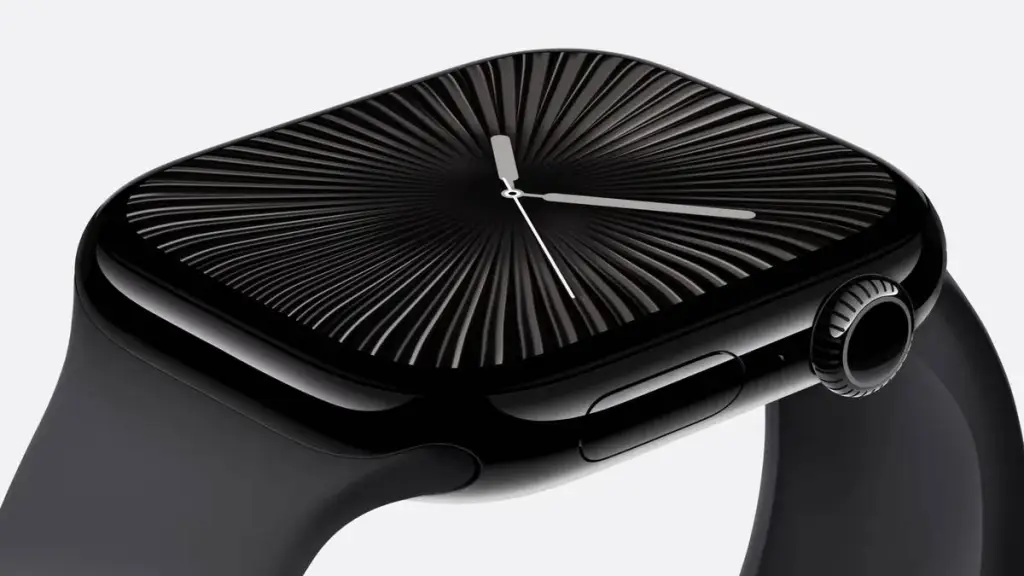
Apple also highlighted that 80% of sleep apnea patients remain undiagnosed. To help with this, the Apple Watch uses an accelerometer combined with machine learning and a large clinical-grade dataset to run a breathing disturbances detection algorithm, which tracks a new metric called “respiratory irregularity” during sleep.
Every 30 days, the Apple Watch analyzes a user’s respiratory irregularity data, and if signs of sleep apnea are detected, the watch will notify the user. This feature is not exclusive to the Series 10—both the S9 and Ultra 2 models will also support it. The feature is set to launch in over 150 countries and regions this month.
Additionally, the Apple Watch Ultra 2 is also receiving a stunning new look, featuring a luxurious satin-finished black version. The starting price for the Apple Watch Series 10 is $399 USD, while the Apple Watch Ultra 2 starts at $799 USD.
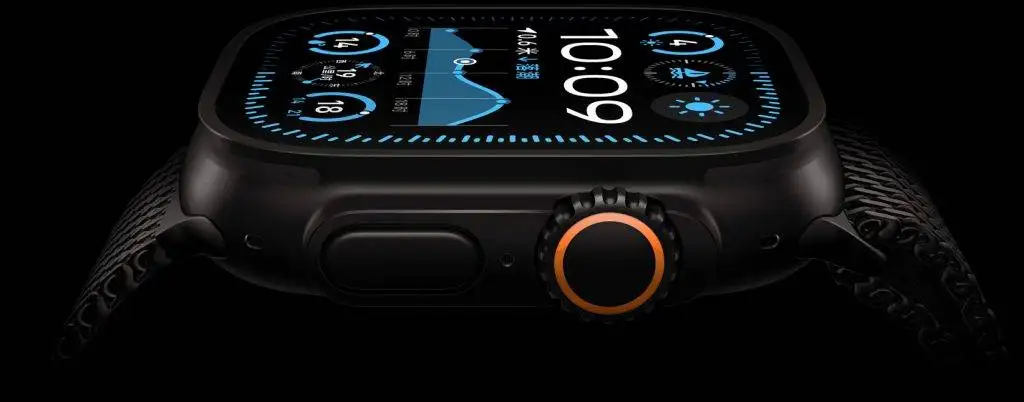
AirPods 4: Now with Noise Cancellation
The new AirPods 4 have arrived, designed to fit naturally in various ear shapes just like previous AirPods models. The H2 chip powers the new AirPods, allowing users to interact with Siri simply by nodding or shaking their head.
These AirPods come with the smallest charging case in AirPods history, offering up to 30 hours of battery life. The case now supports USB-C charging, and can also be charged wirelessly using Qi chargers or the Apple Watch charger.
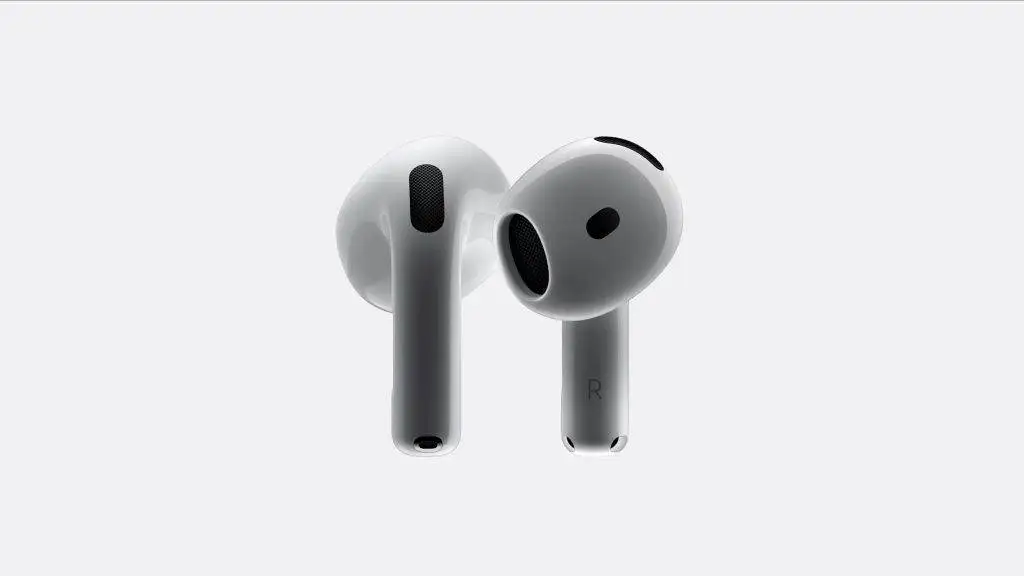
What’s even more exciting is that AirPods 4 now support active noise cancellation (ANC), with adaptive noise cancellation and transparency mode as added features. The ANC version is priced at $179 USD, while the non-ANC version is priced at $129 USD.
As for the AirPods Max, Apple has introduced new colors: Midnight, Starlight, Blue, Purple, and Orange, all of which support USB-C charging. The price for the AirPods Max remains at $549 USD.
Additionally, the AirPods Pro 2 received a massive software update, which now includes a hearing test feature, passive noise cancellation in noisy environments with the new Hearing Protection Mode, and clinical-grade hearing aid functionality.
What Will Drive the New iPhone Cycle?
What was the biggest update to last year’s iPhone 15? Without a doubt, it was the switch to a USB-C port. So, what’s the most significant change in the iPhone 16? There’s no clear, standout answer this time.
Aside from the camera button and narrower bezels, the new iPhone’s hardware hasn’t undergone major physical changes. However, AI has been elevated to an unprecedented level. From the very beginning of the event, Apple made it clear that this is the first-generation AI iPhone. Like the iPhone 15, the iPhone 16 doesn’t introduce a revolutionary design overhaul but signals a strategic shift.
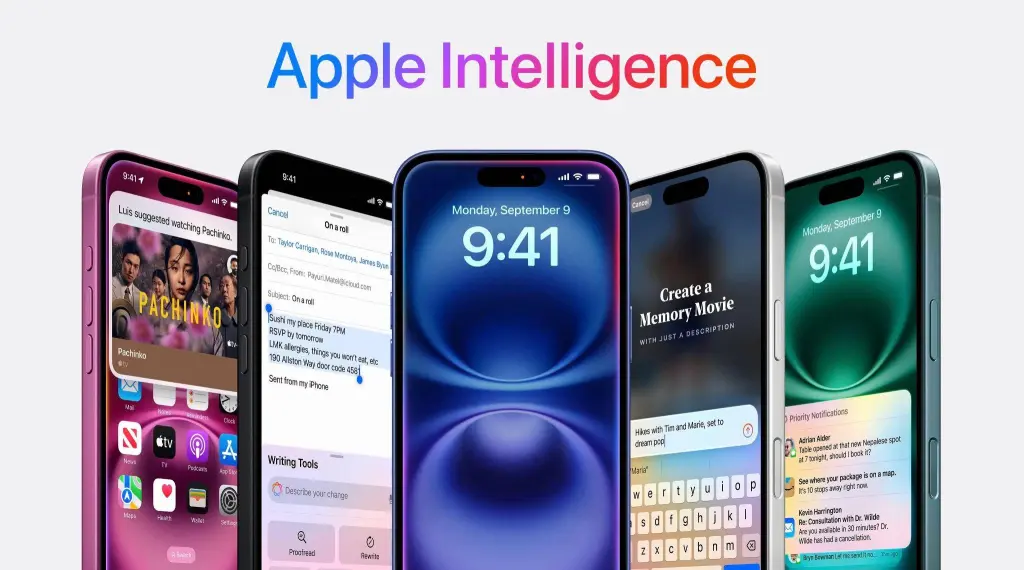
Although the addition of the new camera button seems to push the long-anticipated seamless iPhone without any physical buttons further away, Apple demonstrated that this button can also function as a shortcut for AI features. This answers a major question we had before the event: why would Apple introduce a camera button when the Action Button on the iPhone 15 already has a high learning curve?
This new button helps lower the barrier to using Apple Intelligence. After all, AI features, whether from Apple or other companies, can still require a bit of a learning curve, which can conflict with the way users typically interact with their devices and systems.
More importantly, this button encourages users to develop new interaction habits. With just a press, you can trigger Apple Intelligence, opening a new “AI lens” for your iPhone—an easy and natural way to interact, much like how Steve Jobs introduced slide to unlock with the goal of making user interactions feel instinctive.
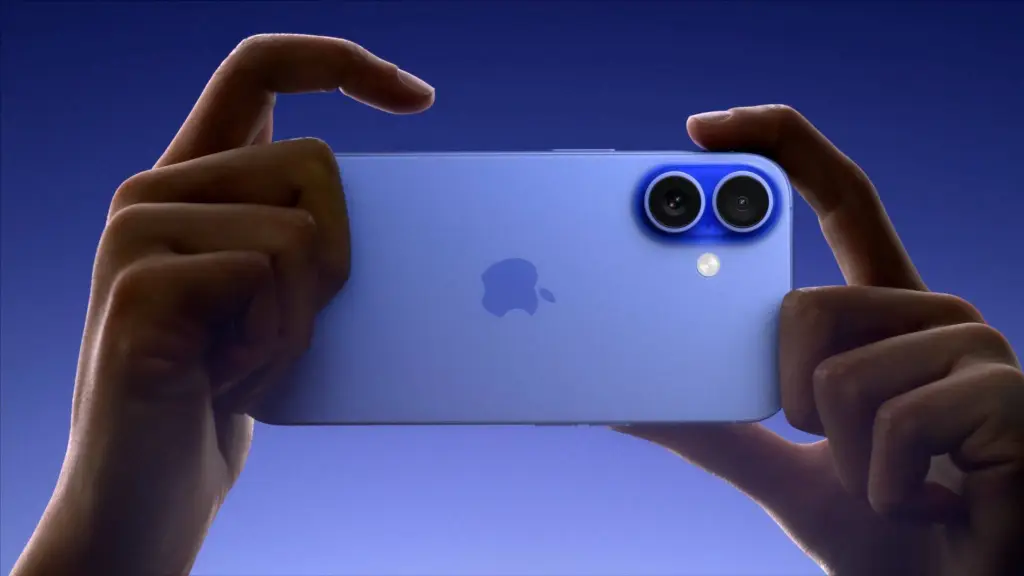
With no major physical hardware changes, what will drive the new iPhone cycle? Before the event, Tim Cook had already answered this question in several interviews: it’s Apple Intelligence.
Some analysts even predict that the iPhone 16 will usher in an AI-driven super cycle, with iPhone sales potentially exceeding 240 million units in the 2025 fiscal year.
What does this number mean? The iPhone 6 series, which holds the record for the highest sales of any iPhone generation, sold 220 million units. Selling 240 million would mean Apple would have to set a new sales record during a time when the global economy is still recovering, and consumers are upgrading their phones less frequently.
At this point, you might wonder: for most users who’ve only seen Apple’s AI features in keynote presentations and media coverage—it’s hard to imagine what makes these AI functions so compelling.
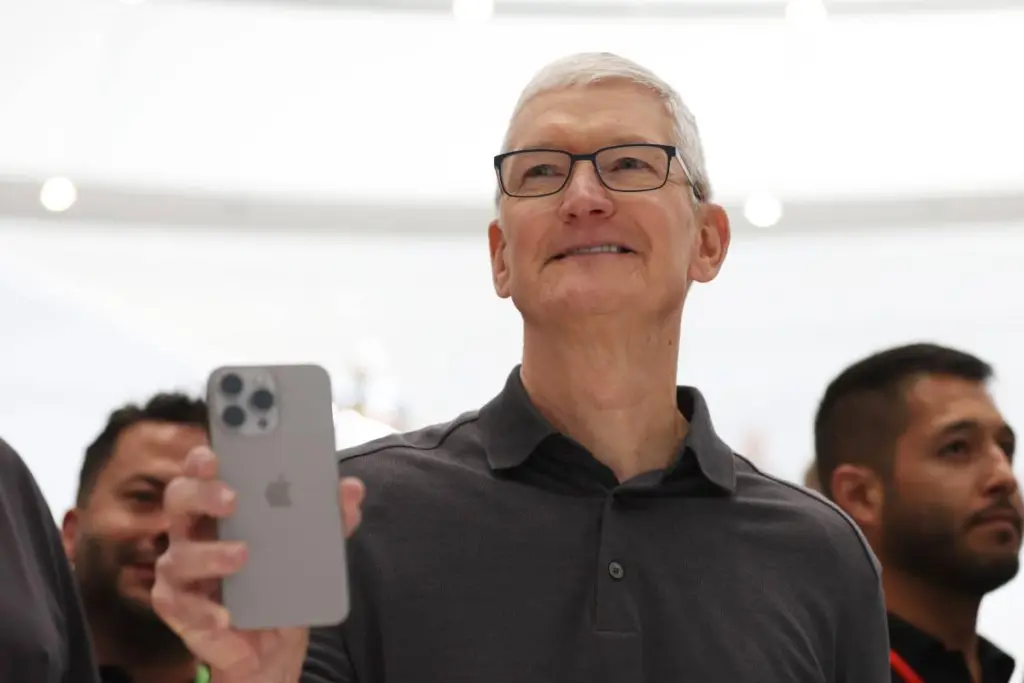
In reality, if Apple is going to drive a new cycle for the iPhone, AI will indeed be the most significant factor. The key to AI hardware is how well the software and hardware work together.
After Apple introduced Apple Intelligence at WWDC 2024, we proposed the idea that this software-focused event might have a significant impact on hardware in the future.
The new system of multimodal interaction showcased in Apple Intelligence—one that supports natural language-based API calls—allows the operating system to coordinate tasks seamlessly and efficiently in response to user queries. This level of system integration will determine whether AI is viewed as a product feature or a standalone product.
Although no company has yet proven that AI-driven smartphones can significantly influence buying decisions, advances in on-device AI models have quietly exceeded expectations. In June, Apple engineers stated that Apple Intelligence leverages the best on-device models currently available. However, just a few days ago, China’s Modelbest launched a new on-device model capable of running ChatGPT on mobile devices with only 2.2 GB of RAM.
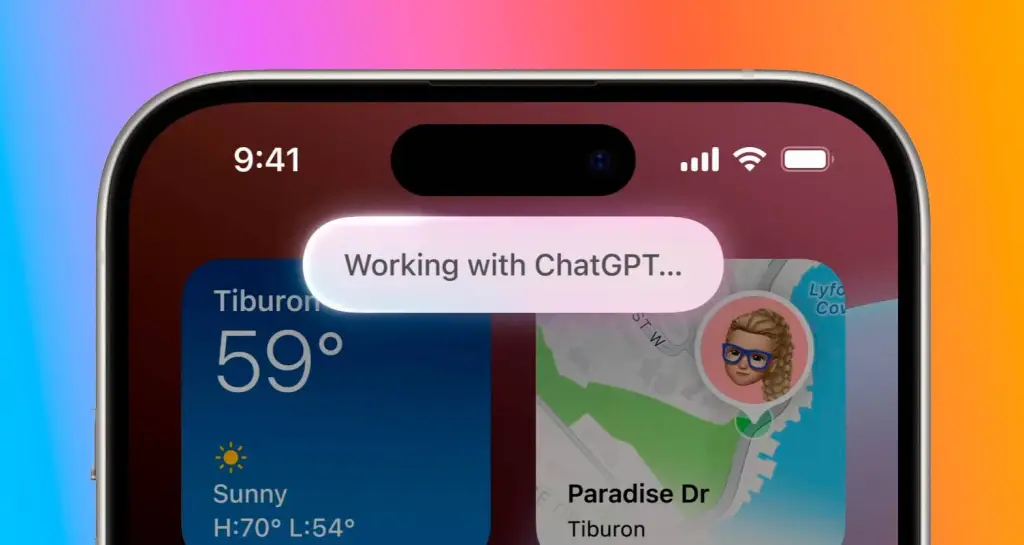
Of course, Apple has only sketched the outline of what’s to come. The ultimate form of Apple Intelligence is unlikely to fully emerge within the next two generations of iPhones. This goes far beyond Steve Jobs’ original vision, as captured in a speech he gave in 1983:
“I think as we look at the next 50 to 100 years, if we really can come up with these machines that can capture an underlying spirit, or underlying set of principles, or any underlying way of looking at the world, then when the next Aristotle comes around, maybe if he carries around one of these machines with him his whole life, his or her whole life, and types in all this stuff, then maybe someday after the person’s dead and gone, we can ask this machine, ‘Hey, what would Aristotle have said? What about this?’ And maybe we won’t get the right answer. But maybe we will. And that’s really exciting to me, and that’s one of the reasons I’m doing what I’m doing.”
Steve Jobs could never have imagined that today, we could hold conversations with him right from our screens.
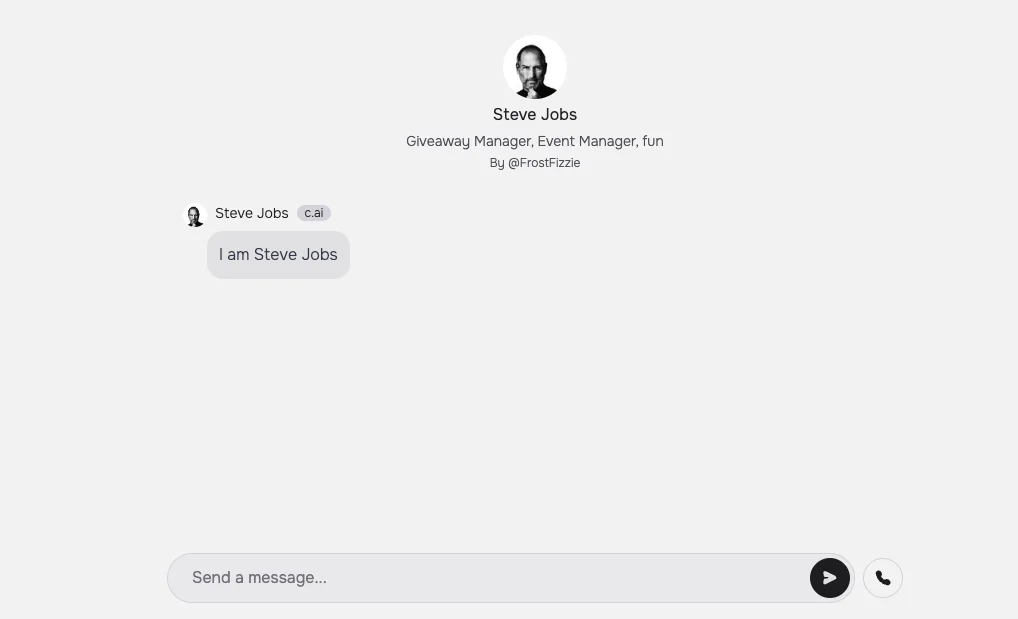
Source from ifanr
Written by Chaofan Li , Weihong Su, Chongyu Mo
Disclaimer: The information set forth above is provided by ifanr.com, independently of Chovm.com. Chovm.com makes no representation and warranties as to the quality and reliability of the seller and products. Chovm.com expressly disclaims any liability for breaches pertaining to the copyright of content.




